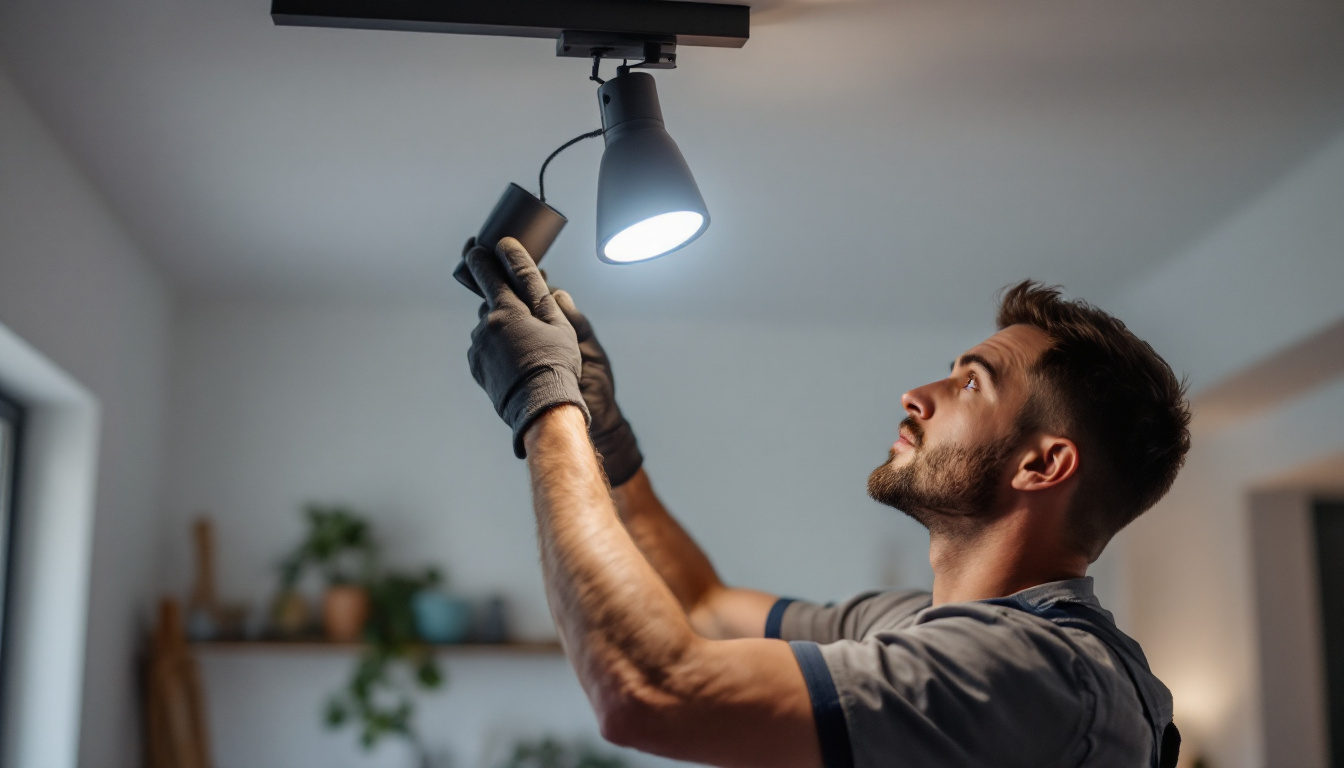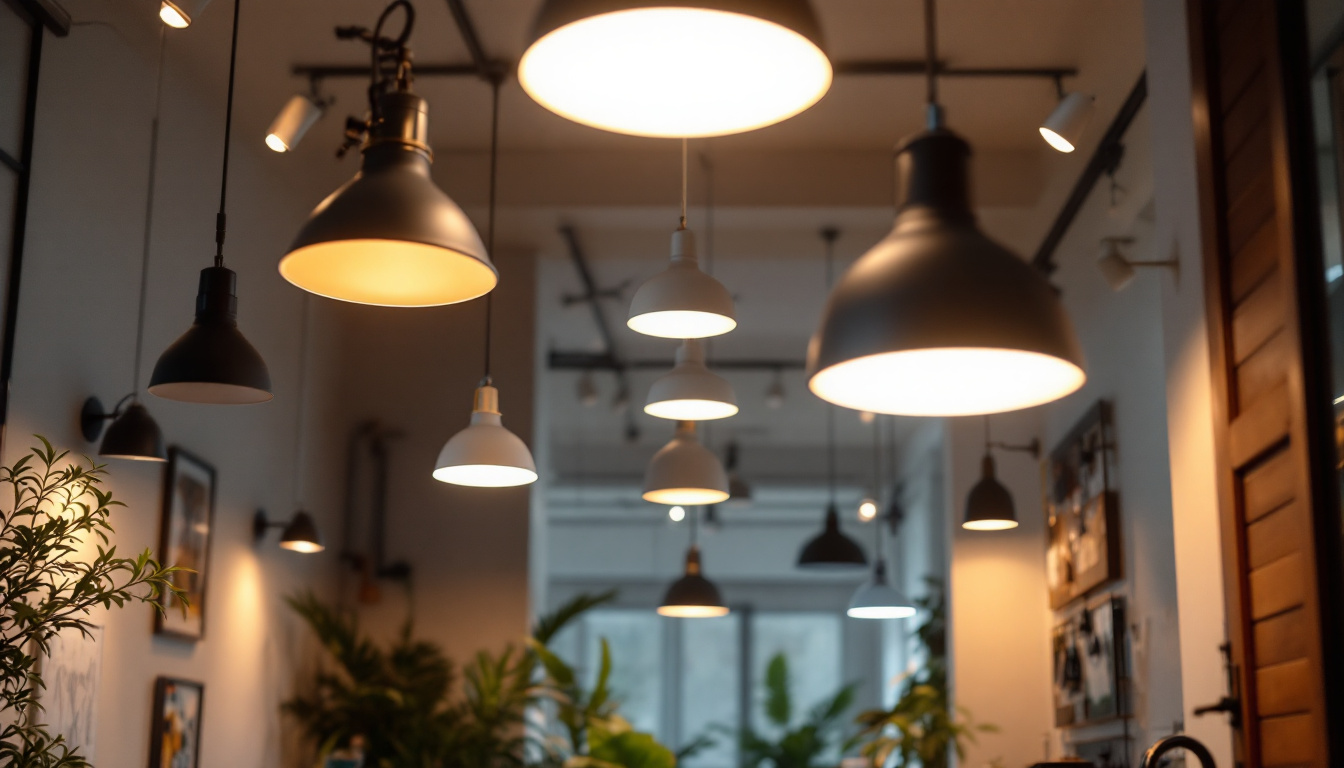
In the ever-evolving world of lighting, contractors face a myriad of challenges when it comes to purchasing lights for their projects. The vast array of products available can be overwhelming, and the need for efficiency and cost-effectiveness is paramount. This article aims to simplify the buying process for lighting contractors, providing insights into the essential aspects of selecting and purchasing lighting solutions.
Before diving into the purchasing process, it is crucial for lighting contractors to have a solid understanding of the basic principles of lighting. This knowledge not only aids in making informed decisions but also enhances the overall quality of the installations. A well-lit space can dramatically influence the ambiance and functionality of an area, making it essential for contractors to grasp these foundational concepts.
Lighting can be broadly categorized into three types: ambient, task, and accent lighting. Ambient lighting provides overall illumination, task lighting focuses on specific areas for activities, and accent lighting highlights particular features. Understanding these types allows contractors to choose the right lighting solutions for various applications. For example, in a kitchen, ambient lighting might come from ceiling fixtures, while task lighting could be provided by under-cabinet lights that illuminate countertops. Accent lighting, such as track lights or wall sconces, can then be used to showcase artwork or architectural details, creating a layered lighting effect that enhances both functionality and aesthetics.
There are several light sources available, including incandescent, fluorescent, LED, and halogen. Each type has its own advantages and disadvantages in terms of energy efficiency, lifespan, and color rendering. For instance, LED lights are known for their longevity and energy savings, making them a popular choice among contractors today. Furthermore, the choice of light source can also impact the overall design of a space. For example, vintage-style incandescent bulbs can add a warm, nostalgic feel to a café or restaurant, while sleek, modern LED fixtures can create a contemporary vibe in an office setting. Understanding the aesthetic implications of each light source allows contractors to better align their choices with the desired atmosphere of the project.
Color temperature, measured in Kelvin, affects the mood and functionality of a space. Warmer tones (2700K-3000K) create a cozy atmosphere, while cooler tones (4000K-5000K) are more energizing. Additionally, the Color Rendering Index (CRI) measures how accurately a light source displays colors. A higher CRI is preferable for applications requiring color accuracy, such as in art galleries or retail spaces. It is also important to consider how different color temperatures can influence human behavior; for instance, cooler lighting is often associated with increased alertness and productivity, making it ideal for workspaces. Conversely, warmer lighting can promote relaxation, making it suitable for bedrooms or lounges. By thoughtfully selecting color temperatures and CRI ratings, contractors can significantly enhance the user experience in any environment.
Every lighting project comes with its own set of requirements. Understanding these requirements is essential for selecting the right products and ensuring client satisfaction.
Engaging with clients to understand their needs and preferences is the first step in any project. This includes discussing the intended use of the space, desired ambiance, and any specific aesthetic preferences. By gathering this information, contractors can make informed decisions that align with client expectations. Additionally, it is beneficial to explore the client’s lifestyle and how they interact with the space. For example, a family with young children may prioritize safety and durability in their lighting choices, while a professional office may focus on creating an inspiring and productive environment. Understanding these nuances can lead to a more tailored and satisfying outcome.
The physical characteristics of a space, such as size, layout, and existing architectural features, play a significant role in lighting design. Contractors should assess these factors to determine the appropriate type and quantity of lights needed. For instance, a large open area may require different lighting solutions compared to a small, enclosed room. Moreover, the color scheme and materials used in the space can greatly influence lighting choices. Warm-toned walls may benefit from softer, diffused lighting to enhance the cozy atmosphere, while a modern, minimalist design might call for sleek, directional fixtures that highlight clean lines and textures. Understanding these elements can elevate the overall design and functionality of the lighting plan.
Lighting contractors must also consider local building codes and regulations when planning a project. Compliance with these standards ensures safety and functionality, and it can also influence the choice of lighting products. Familiarity with these regulations can save time and prevent costly mistakes during installation. Additionally, staying updated on energy efficiency standards and sustainable practices is increasingly important in today’s market. Many clients are now seeking eco-friendly lighting options that not only comply with regulations but also reduce energy consumption and lower utility bills. By integrating these considerations into the planning phase, contractors can provide solutions that meet both regulatory requirements and the growing demand for sustainability in lighting design.
Once project requirements are clearly defined, the next step is to streamline the purchasing process. This involves selecting suppliers, comparing products, and managing budgets effectively.
Choosing the right suppliers is crucial for ensuring quality and reliability in lighting projects. Contractors should seek suppliers with a strong reputation for customer service, product quality, and timely delivery. Establishing long-term relationships with trusted suppliers can lead to better pricing and access to exclusive products.
With a multitude of lighting products available, it is essential to compare options based on performance, energy efficiency, and cost. Utilizing online resources, product catalogs, and supplier consultations can help contractors make informed decisions. Additionally, reading product reviews and seeking recommendations from peers can provide valuable insights.
Effective budget management is a critical aspect of the purchasing process. Contractors should establish a clear budget for each project and prioritize spending based on client needs and project requirements. Keeping track of expenses and seeking cost-effective solutions can help maintain profitability while ensuring quality outcomes.
In today’s digital age, technology plays a significant role in simplifying the purchasing process for lighting contractors. Leveraging various tools and platforms can enhance efficiency and streamline operations.
Online marketplaces have revolutionized the way contractors purchase lighting products. These platforms offer a vast selection of products, often at competitive prices. Contractors can easily compare options, read reviews, and place orders from the comfort of their office. This convenience can save time and reduce the hassle of traditional purchasing methods.
Utilizing lighting design software can greatly enhance the planning process. These tools allow contractors to visualize lighting layouts, experiment with different products, and assess the impact of various lighting scenarios. By providing a clear representation of the final outcome, contractors can make more informed purchasing decisions and present compelling proposals to clients.
Effective inventory management is essential for contractors to avoid delays and ensure project timelines are met. Implementing inventory management software can help track stock levels, manage orders, and forecast future needs. This proactive approach can minimize the risk of running out of essential products during critical phases of a project.
Successful lighting contractors understand the importance of building strong relationships with their clients. This not only leads to repeat business but also enhances reputation and trust within the industry.
Clear and open communication is key to establishing a strong rapport with clients. Contractors should keep clients informed throughout the purchasing and installation process, addressing any concerns or questions promptly. This transparency fosters trust and demonstrates professionalism, ultimately leading to greater client satisfaction.
Offering value-added services, such as post-installation support and maintenance, can set contractors apart from competitors. Providing clients with guidance on how to best utilize their lighting systems can enhance their overall experience and encourage referrals. Additionally, offering warranties or guarantees on products can further instill confidence in clients.
Soliciting feedback from clients after project completion is an excellent way to identify areas for improvement and enhance future projects. This practice not only demonstrates a commitment to quality but also provides valuable insights into client preferences and expectations. Implementing constructive feedback can lead to improved services and stronger client relationships.
The lighting industry is constantly evolving, with new technologies and trends emerging regularly. Staying informed about these changes is essential for contractors to remain competitive and provide the best solutions to their clients.
Investing in continuing education and training opportunities can help contractors stay abreast of the latest developments in lighting technology and design. Workshops, webinars, and industry conferences provide valuable insights and networking opportunities, enabling contractors to enhance their skills and knowledge.
Subscribing to industry publications, blogs, and newsletters is another effective way to stay informed. These resources often provide updates on new products, design trends, and regulatory changes, allowing contractors to adapt their purchasing strategies accordingly.
Engaging with other lighting professionals through networking events and online forums can foster collaboration and knowledge sharing. By connecting with peers, contractors can exchange ideas, discuss challenges, and learn from each other’s experiences. This collaborative approach can lead to innovative solutions and improved purchasing practices.
For lighting contractors, the process of purchasing lights can be simplified by understanding the fundamentals of lighting, assessing project requirements, streamlining the purchasing process, leveraging technology, building strong client relationships, and staying updated on industry trends. By implementing these strategies, contractors can enhance their efficiency, improve client satisfaction, and ultimately drive business success.
In a competitive landscape, the ability to navigate the complexities of lighting procurement effectively can set contractors apart. Embracing these practices not only leads to better project outcomes but also fosters lasting relationships with clients and suppliers alike.
Ready to elevate your lighting projects while maximizing your budget? Look no further than LumenWholesale for a comprehensive range of top-quality, spec-grade lighting products at unbeatable wholesale prices. Say goodbye to local distributor markups and hello to our direct-to-contractor approach that ensures you get the most reliable and high-performance lighting solutions. With free shipping on bulk orders, LumenWholesale is committed to providing you with the perfect blend of quality, affordability, and convenience. Don’t compromise on your lighting needs—Wholesale Lighting at the Best Value is just a click away.

Discover how installing fluorescent light ballasts can revolutionize your lighting projects.

Discover the key qualities that distinguish top lighting contractors when it comes to installing track light fixtures.

Discover why sourcing pendant lighting in bulk from local distributors might not be the best choice.

Discover essential tips from a seasoned lighting contractor on selecting the perfect LED light fixtures.